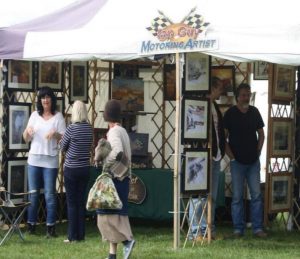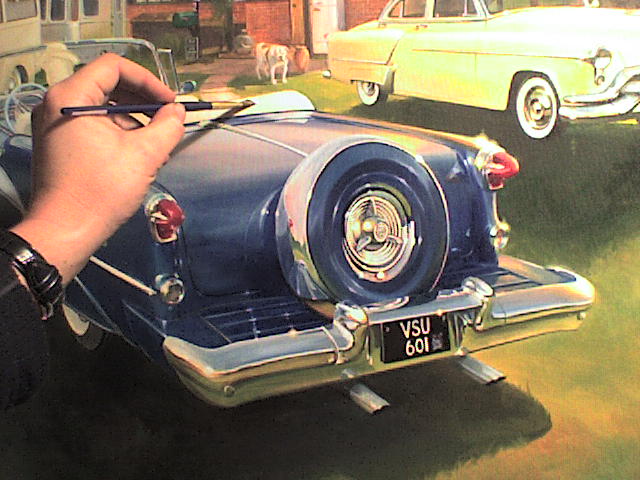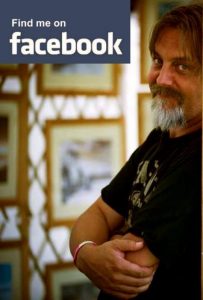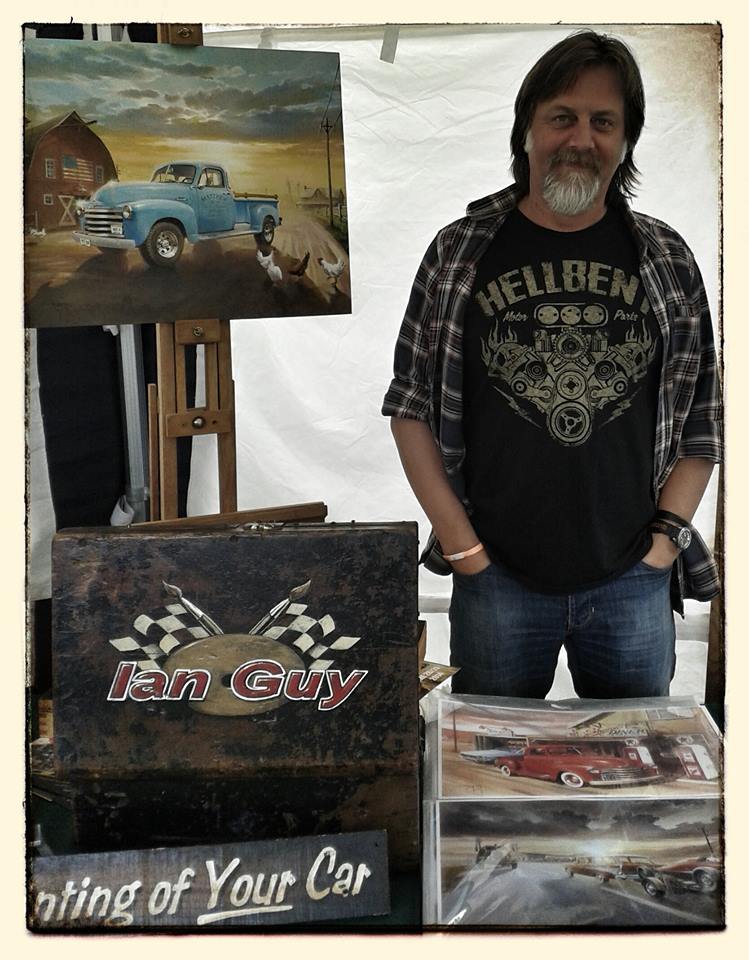 A little bit about the man himself.
A little bit about the man himself.
Having been established for around 40 years Ian Guy is one of the foremost automotive artists in the UK today, his art being appreciated by numerous national and international collectors worldwide.
“Since I was a child I have always painted, it is a passion, a real labour of love. And it’s the automobile that captures my imagination the most.”
As a full-time professional artist, Ian specialises in cars, trucks and bikes, of every imaginable type. Painting from a depth of knowledge and passion, each work is inspired and informed by countless hours of personal observation and research.
Ian has become widely known for his technical accuracy, intricate detail, dramatic lighting, and the little ‘extras’ found in most of his compositions.
Born and raised in Gloucestershire Ian moved south soon after his education with the idea of selling his art to tourists, something he’d been drawn to in his early teens whilst on holiday in Cornwall.
For many years he had his own public Gallery in Saint Ives Cornwall, a town known the world over for its Artist Colony. His love of all things automotive often featured in his paintings which led him to try selling his work at car shows, historic racing festivals and the like. This was instantly successful and took him all around the country. He soon realised being based so far south was becoming a hindrance and so decided to sell-up and move back ‘home’ where he’d be based more centrally for his expanding new venture.
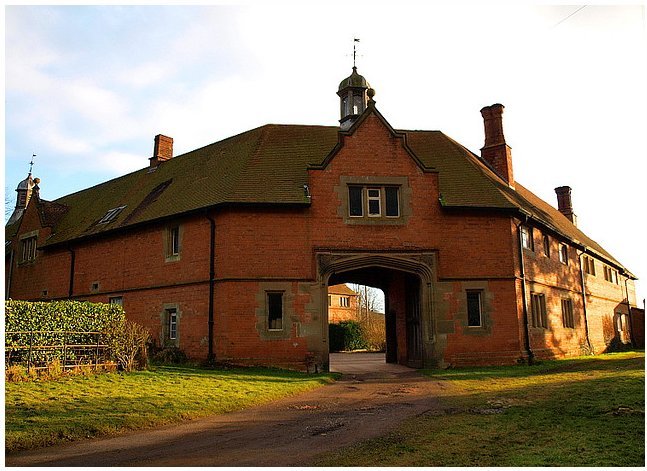
Now from his home and studio, in a former Gothic Stable-block in rural Herefordshire, Ian does a lot of his business by mail-order and on-line, using his website to reach out to car lovers across the UK and overseas.
Through the Summer months Ian, and his partner Mandy, can be found with their mobile gallery of Ian’s original oil paintings and prints at many shows around the country, all with an automotive nature. So should you have the inclination, you can meet Ian and Mandy in person. They are an easily approachable couple both with warm and welcoming personalities. And you might even get the chance to watch Ian work on his latest painting.
Most commissions are motoring based and will recall a favourite car, truck or bike, or favourite motoring adventure or fantasy. Ian often works from clients’ photographs, but is equally happy to source material of his own. As well as producing one-off paintings for individual customers, he will take on corporate commissions.
Ian is happy to paint any subject based on customers’ requirements, he’s received commissions for animal portraits, single & family portraits, and favourite personal landscapes & seascapes. Though there’s no denying his particular reputation for affordable paintings of British & American classics, as well as hot rods, custom cars, kit cars, chopper bikes & trikes, along with racing & competition cars & bikes.
So for anyone wanting to capture a cherished possession, an Ian Guy original can be bought for less than £400, while prints start at around £25
Want to read more?
Here’s Mandy’s entertaining blog on A Day in the Life of the Artist
And here’s more from the artist’s point of view …
Want to see how it’s done?
Click here to take a look over his shoulder …
“Painting, for me, has never been a hobby, it’s not a relaxing experience – I feel compelled, even driven to paint. Since I was a child I have always painted, it is a passion, a real labour of love. And it’s the automobile that captures my imagination the most.”
“I start with small compositional sketches in pencil, I might do one, two or several until I feel the composition is right. I try not to use front light, ie. the sun behind the observer, preferring back light or low side light making long shadows, or diffused light as in a cloudy, or dusty day. My love of dust and mist appears a lot in my paintings, it helps portray the distance between objects , and sets a mood, giving atmosphere to the whole composition.
When painting at shows you might see me using a small hand-held mirror, and when working in my studio I have a large mirror behind me. A mirror allows me to view the painting in reverse, if something in the painting does not feel right to me the problem becomes obvious in the reflection, and I can then correct it …”



